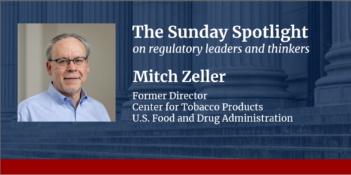
Final vote on proposal postponed in face of stiff opposition.
A European Commission proposal to regulate electronic cigarettes as pharmaceuticals has run into substantial roadblocks. On October 8, the European Parliament passed an amendment to the Commission’s proposal. As amended, the proposal would subject e-cigarettes to the same regulatory regime as normal cigarettes. In the wake of upheaval, a final vote on the proposal has been delayed to help build a consensus.
The tabled proposal was the EU’s first attempt to regulate electronic cigarettes, introduced as part of broader legislation aiming to revise the Tobacco Products Directive.
Electronic cigarettes, or e-cigarettes, provide smokers with an increasingly popular alternative method of smoking that combines water vapor with nicotine to deliver a familiar buzz without the additives found in traditional tobacco cigarettes. The “explosive” growth of the e-cigarette market has attracted the attention of regulators in several countries.
Under the Commission’s proposal, e-cigarettes containing higher than a set amount of nicotine would be subject to the EU regulatory regime for medicinal products and only allowed on the market after demonstrating their “their quality, safety and efficacy, and with a positive risk/benefit balance.” Furthermore, the proposal would require that e-cigarettes only be offered for sale by registered pharmacists. According to one consumer advocate, the regulation could hinder access to the e-cigarette market, making it more difficult for people who are using these products as tools to help them quit smoking.
The proposed regulation would apply to many products. It targets “nicotine containing products,” defined in part as any product whose “intended use” results in a nicotine blood content level above a certain amount. Given the language on “intended use,” one could argue that traditional tobacco products would be subject to the pharmaceutical approval process were the commission’s proposal to be adopted. This ambiguity raises further questions about what would happen if regulators had to evaluate the safety and efficacy of traditional cigarettes.
Regardless of whether the European Union elects to regulate e-cigarettes as pharmaceuticals, they will still be subject to the same advertising restrictions facing tobacco products. Furthermore, e-cigarettes, like other tobacco products, would be banned from having any “characterizing flavor.” The proposal defines this term broadly as any distinguishable “odor or taste other than tobacco.” The proposal couples this standard with an outright ban by compelling Member States to prohibit products with such a “characterizing flavor” from entering the market.
The legislative battle in the EU may foreshadow a similar fight in the United States. E-cigarettes constitute a rapidly growing $1.7 billion market, and the Food and Drug Administration (FDA) has indicated that it is planning to regulate these products. Already, “high-level meetings” have taken place at the FDA’s headquarters with industry executives, regulators, and members of Congress. As industry groups lobby aggressively to avoid “excessive regulation,” the regulatory future of e-cigarettes remains uncertain, both in the United States and abroad.



